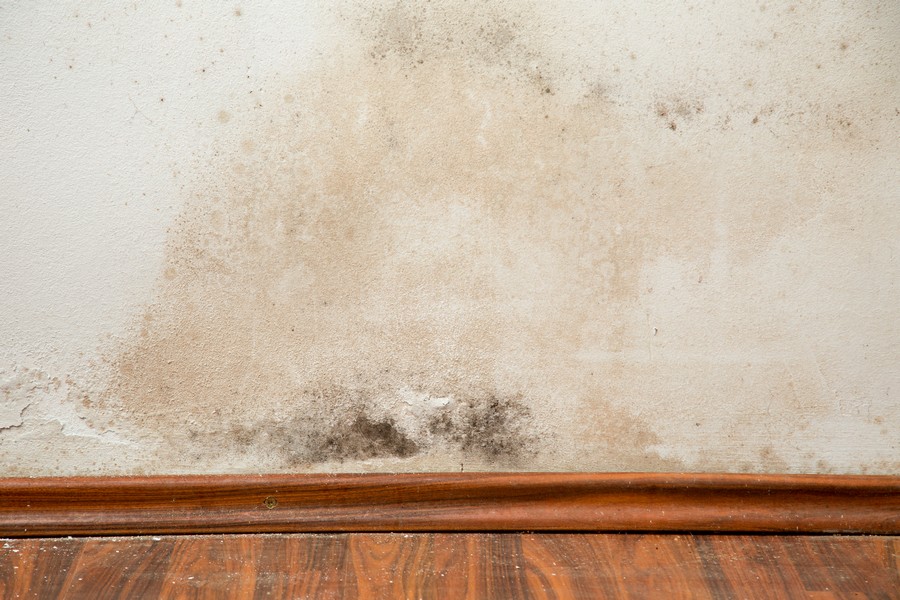Rising damp is one of the most important yet misunderstood damp problems that affect homes throughout the United Kingdom. This page will explain what causes rising damp and how to spot the apparent indications of the problem on the ground level, including walls, skirting boards, paint, wallpaper, and brickwork.
Confirmed cases of rising damp will almost always require the installation of a remedial damp proof course, and the sooner this is done, the less likely you are to create an unpleasant and damp environment in your house. Furthermore, if excess moisture in the wall is allowed to accumulate, it might reach the timber, resulting in wet or dry rot. Please continue reading for tips on detecting the indications of rising damp and how to remedy it from our rising damp experts, or contact Sussex Damp Experts to schedule a survey.
What’s Rising Damp?
Rising damp is a very uncommon type of moisture that affects building walls. Moisture from the ground rises through the walls as a result of capillary action. This means that groundwater is drawn up through microscopic channels in the bricks like a series of straws. This water contains salts, which move up the wall as well.
Other porous construction elements, such as plasterwork and the timber found in floorboards, joists, and skirtings, are located around the damaged wall. These materials will also readily absorb groundwater, and you may notice signs of wet rot in the wood. For help detecting and treating wet rot, please consult our specific pages.
Rising damp is usually detected by the harm it causes to a building’s internal walls. Plaster and paint erode over time, and wallpaper loosens. At the point where the groundwater has reached, a visible stain emerges on the wall in the form of a tide mark. Salts may bloom on the interior surface as well. This is a common symptom of rising humidity and can result in paint and plasterwork debonding. Mortar may crumble externally, leaving white salt stains on the walls.
What Causes Rising Damp?
To prevent water from coming up, most structures have a barrier constructed at the wall’s lower level. A damp proof course is what it’s called (DPC). Depending on the period in which the property was built, these can be made of non-absorbent, water-resistant materials such as slate, bitumen, or plastic. These physical DPCs may fail over time, or they may not exist at all in older homes. There is nothing to stop water from travelling up your wall if you don’t have a DPC or have evidence that it has failed.
The DPC can sometimes be left untouched, but it can also be bridged. Because of a design flaw, the damp from the ground can travel up past the DPC.
Here are some examples:
- Debris in the wall cavity or the void beneath the flooring;
- Overlapping renders or plasters on the inside or outside of the DPC;
- Raised ground levels outside the DPC (or damp proof membrane);
- Insulation material in the cavity is insufficient;
- Solid flooring;
- Abutting garden walls/intersecting masonry structures.
Signs Of Rising Damp
There are several key rising damp signs that property owners might recognise. Knowing how to identify rising damp might assist you in quickly resolving the issue. But in case of doubt, you can always contact Sussex Damp Experts for professional guidance.
Walls With Damp Stains And Tidemarks
Tide marks on walls are one of the most common symptoms of growing wetness. Tide markings are created by wet evaporation and salt migration from the ground that has made its way up the wall. These can be seen from the bottom of the wall to about a metre above the ground. If you can’t see tidemarks, search for damp stains or patches on your walls as an alternative. These patches are brown or dark yellow in colour, and they can be found from the bottom of the wall to one metre above the floor, just like tidemarks.
If the damp is visibly higher than one metre up the wall, it could still result from rising damp, but it is more likely that your home has a penetrating damp problem. Penetrating damp may be present in addition to rising damp, necessitating caution in determining the accurate diagnosis.
The Appearance Of Damp Or Wet Patches On Walls
If your home has damp or moist patches on the walls, rising damp is likely to be the source. This could be rising damp if the damp patches are only on the lower wall section and the home is on the ground floor. This is caused by capillary action, which causes moisture from the ground at the base of your property walls to rise through the brick or stonework. If there isn’t an efficient Damp Proof Course at the base of the wall, rising damp will affect it. The only floor of a house where rising damp can develop is the ground floor.
If you have a damp problem on a floor higher than the ground floor, it is likely to be a different type of damp problem (most likely penetrating damp or excessive condensation).
Salts Within The Plaster
This is one of the most common signs of rising damp.
Moisture travels upwards through the stonework thanks to capillary action. As humidity rises, the wall structure from the ground picks up salts from the earth, which migrate into the property and harm the plaster and decoration. These salts are known as hygroscopic salts, which means they draw moisture from the air and will cause your wall to become damp. When you touch the walls, they may feel moist. The salts are brought to the surface as the moisture in the wall evaporates, and the salts can occasionally be visible as a white coating on the surface.
If your damp wall is caused by rising damp, it will also be affected by damp generated by hygroscopic salts, which must be addressed as part of the rising damp problem remediation.
Wallpaper Or Paint Peeling
Peeling wallpaper or paint is another common symptom of rising humidity. As a result of the ongoing damp difficulties, the amount of moisture within your walls will rise. More moisture on the wall might cause wallpaper or paint to peel away. This is especially noticeable along with the skirting board or along the lowest portion of the wall. In these situations, the wallpaper will usually come free initially immediately above the skirting board, with the edges curling away from the wall.
On the other hand, peeling wallpaper or paint could indicate a condensation or penetrating damp problem in the house, necessitating an accurate diagnosis to guarantee that the suitable repair specification is implemented to fix the problem.
Plaster That Is Flaky Or Bubbling
If you notice flaking or bubbling plaster, crumbling plaster, or powdery deposits on your walls on the ground floor, it’s a sign that you have a damp problem, which could be rising damp. The moisture from rising humidity can cause plaster on walls to degrade and crumble to the point where it falls off the wall. This might result in noticeable cosmetic damage to your house’s ornamented and plastered walls, which can be highly costly for property owners if not addressed as soon as feasible.
Skirting Boards And Flooring Rotting
Skirting boards and floors may begin to decay if the increasing damp problem in your home is left ignored for an extended period. This is due to excessive moisture damaging the timbers, which allows a fungal attack to germinate. Like many other types of damp, rising damp can cause rot in the woods it comes into direct touch with. Skirtings and other timbers that show symptoms of cracking or that disintegrate quickly when touched should be avoided by property owners. Where the home has been harmed by long-term wetness, visible fungus growing on the skirting boards or flooring timbers may be visible.
Damp And Musty Smell
The unmistakable rising damp smell within the property is one of the clearest damp indications to identify. Even if you can’t see wet in your home, you can almost always smell it. The damp has a particular odour that is frequently described as unpleasant, musky, and moist. However, if there is no visible indication of wet on the property fabric, diagnosing the sort of damp that is damaging the property may be challenging, and you may need the assistance of a Specialist Damp Surveyor. Different types of damp require different treatments; therefore, it’s critical to get your damp problem identified correctly to fix it as quickly as possible.
Black Mould
The presence of black mould in the bottom areas of your wall is a clear indication that the area is moist. If black mould is present, it indicates that you have a condensation problem; however, if the problem arises on the lower half of the ground floor walls, it could suggest that you have rising or penetrating damp, which would need to be addressed.
Fasteners Made Of Iron And Steel That Have Rusted
Unprotected iron and steel will rust if exposed to excessive levels of moisture for an extended time. The property might become significantly less secure because rust causes iron and steel fasteners to lose their stability. Fasteners such as cavity wall ties in the property rusting and no longer function can significantly influence the property’s structural integrity.
Bricks And Mortar Crumbling Between Bricks
The internal and external surfaces of ground-floor walls can be severely harmed by rising damp. Repairing crumbling bricks and mortar can be pricey. Rising damp can produce loose or crumbling bricks or mortar, which can become exceedingly porous and allow penetrating damp to penetrate the masonry, causing further damage to internal walls. Fortunately, decaying bricks or mortar may be easily identified, and the condition is commonly referred to as fretting. Check the cement joints on your external brickwork or stonework when checking it.
Finding Help To Tackle Damp Problems
Sussex Damp Experts’ experience means that we can discuss your property’s issue and recommend the procedure that will provide the best solution to treat rising damp.
We are here to help, so if you have any concerns about any aspect of a damp issue, please get in touch with us on 01273 257 765. Our technical team are always happy to help and make sure you get the right solution for your property’s problem.


